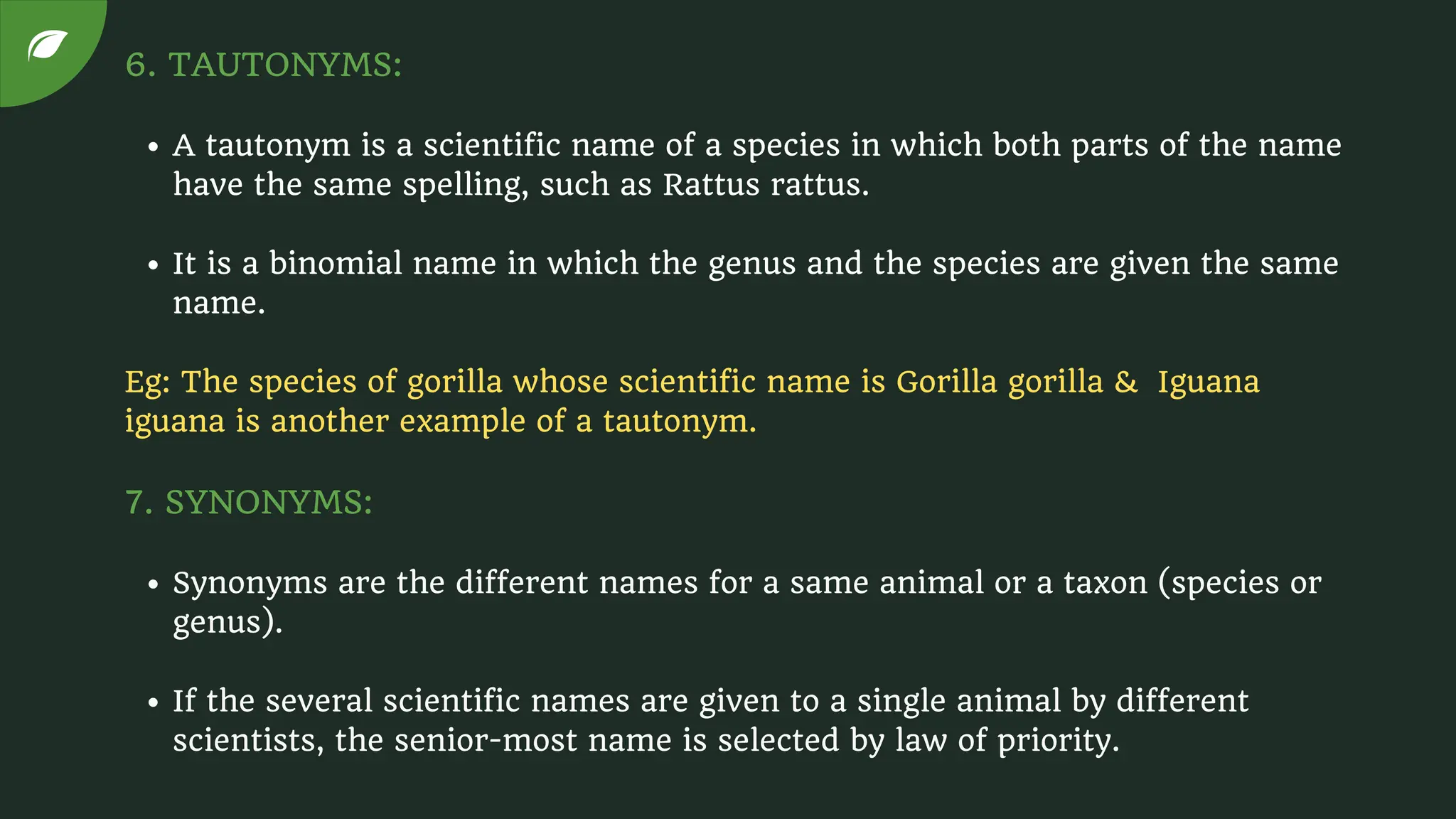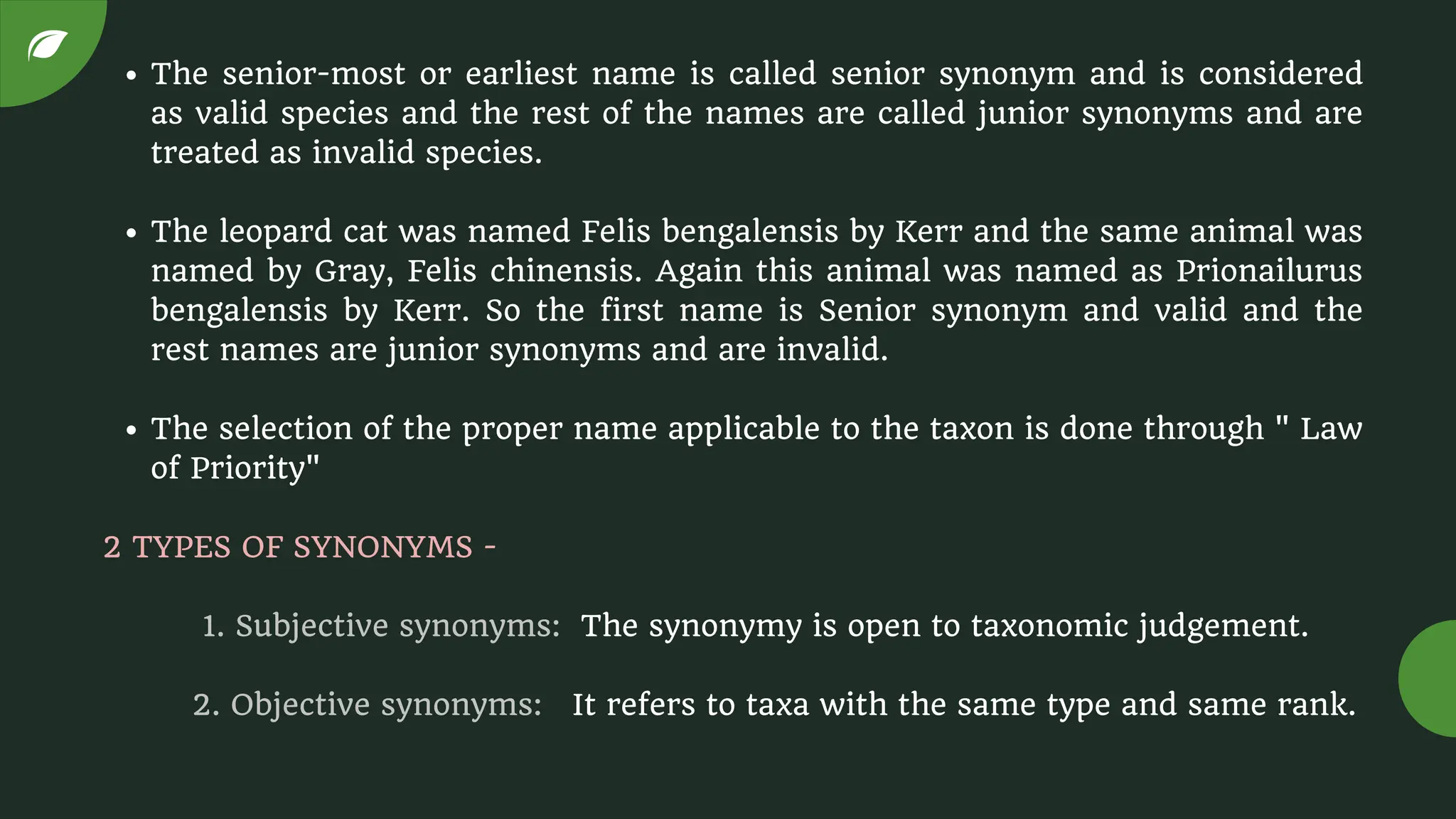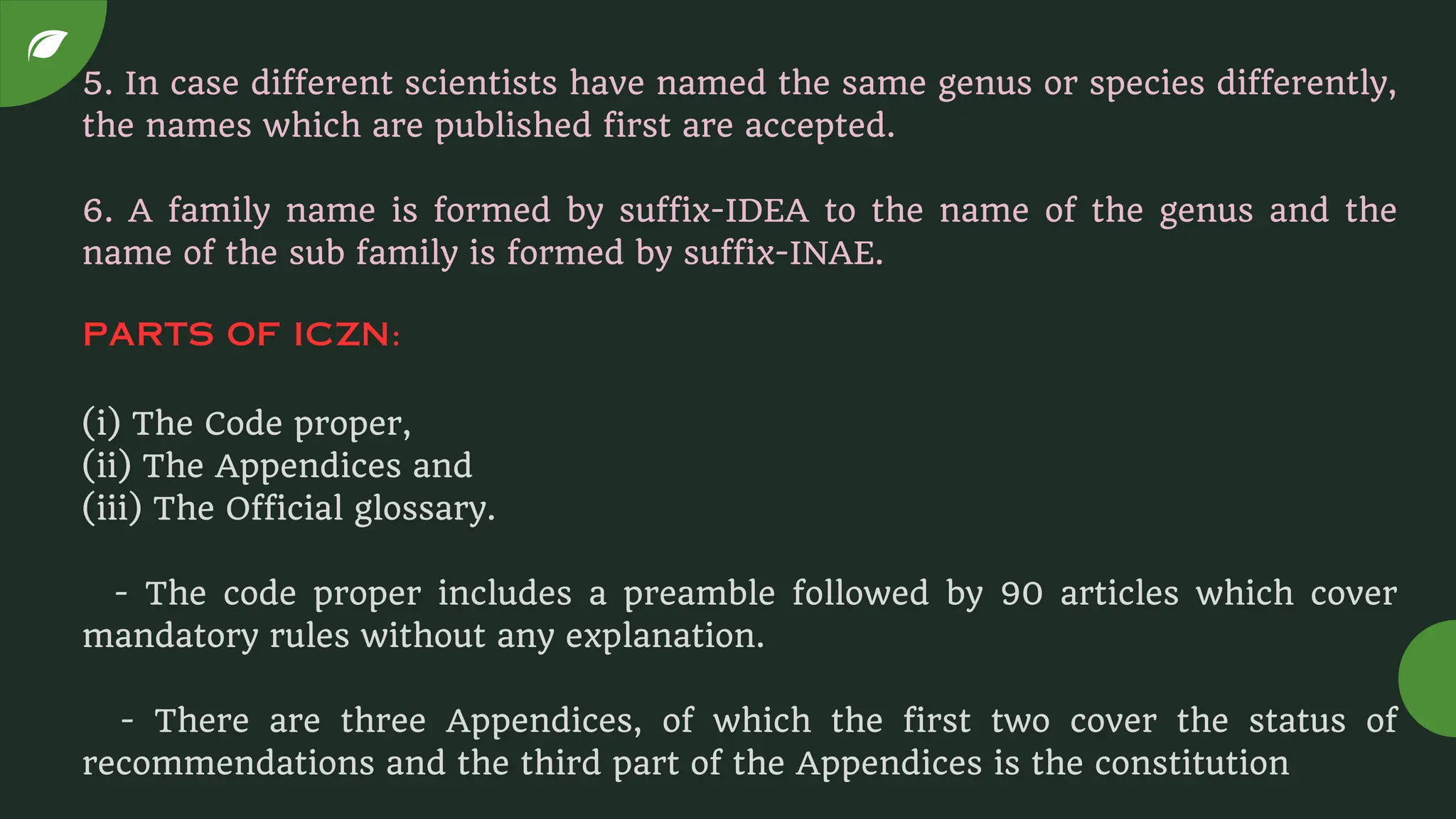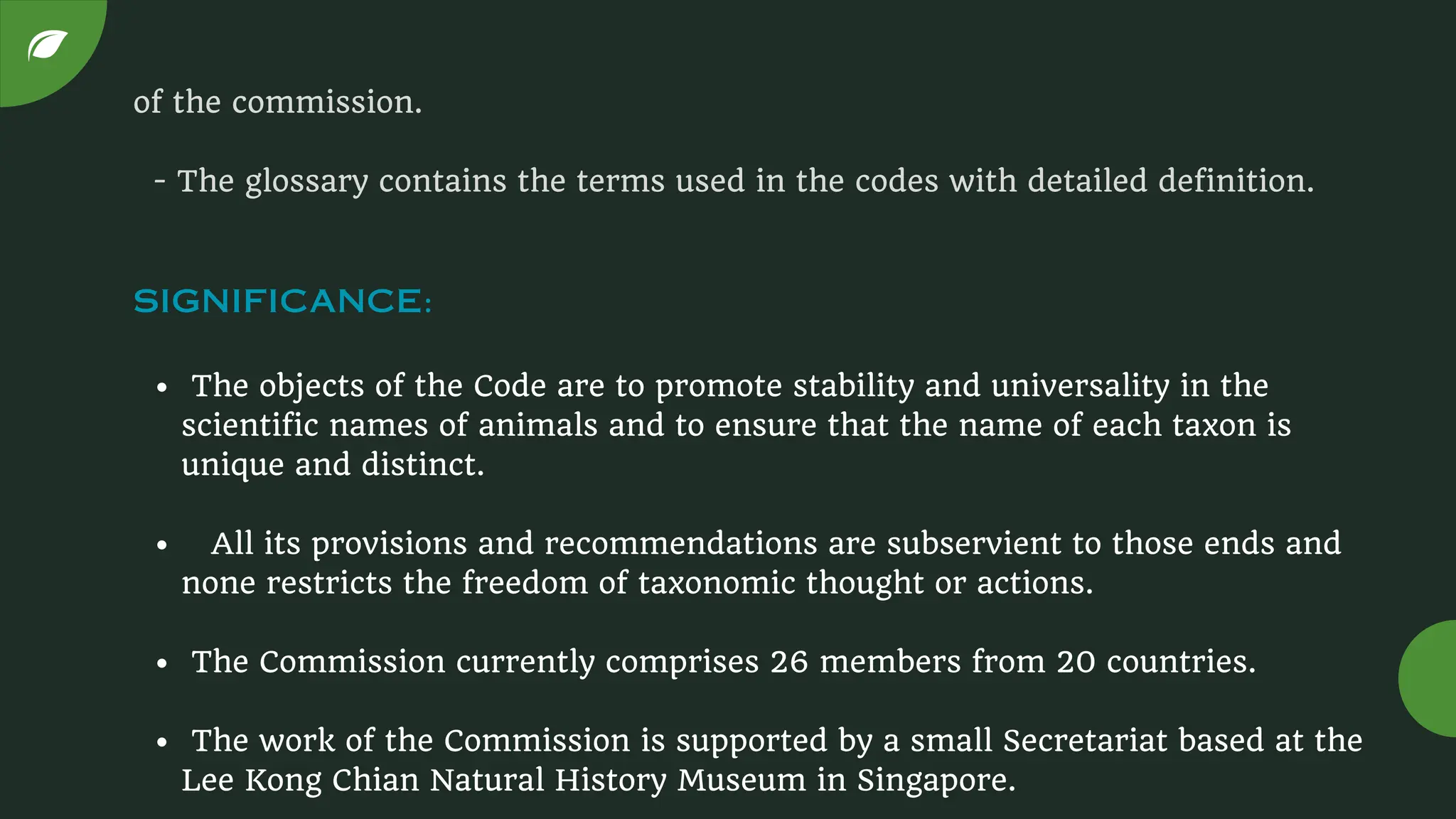The International Code of Zoological Nomenclature (ICZN) is a set of rules that governs the scientific names of animals. It aims to promote stability and order in animal taxonomy. The ICZN originated from rules developed in the 19th century and was formally established in 1961. It consists of principles, rules, and recommendations for naming taxa and determining priority of scientific names according to date of publication. The ICZN seeks to ensure each taxon has a unique and distinct scientific name.

















